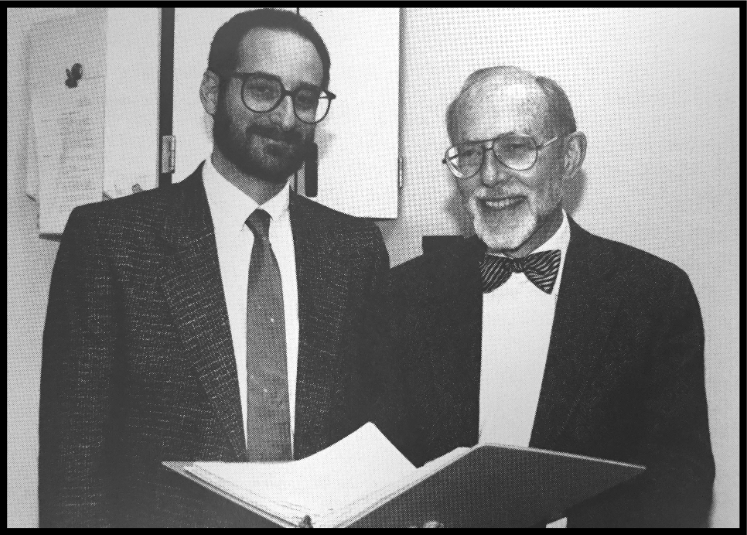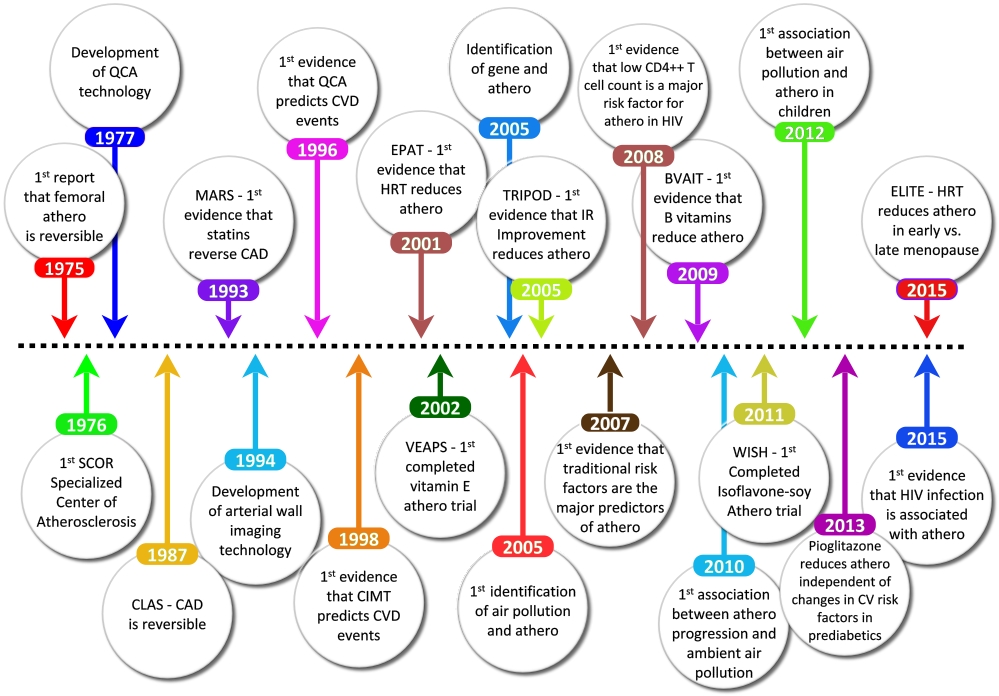ARU History
The Atherosclerosis Research Unit (ARU) at the Keck School of Medicine of the University of Southern (USC) California was founded more than 30 years ago by the late David H. Blankenhorn, M.D. who was also the Program Director of Atherosclerosis Research at USC for 20 years prior to establishment of the ARU. Dr. Blankenhorn was a pioneer who forever changed our perspective concerning the reversibility of human atherosclerosis, once believed to be irreversible, and how we could successfully alter it. After his death in 1993, Howard N. Hodis, M.D., a student of Dr. Blankenhorn’s, was appointed Director of the ARU. Utilizing an integrative biology approach, the direction and extent of research within the ARU was broadened. With more than 50 years of continuous NIH funding, the ARU has generated a rich history of research with many accomplishments.

In collaboration with scientists at the California Institute of Technology Jet Propulsion Laboratory, application of computer image processing of angiograms led to development of the first computerized procedures for quantitative angiographic measurement of atherosclerotic lesions in the early 1970’s. Utilizing this new technology, angiographic evidence of regression of femoral atherosclerosis by computer image processing of femoral angiograms was demonstrated in the mid-1970’s. These studies were met with skepticism, and atherosclerosis reversibility, especially reversibility of coronary artery atherosclerosis was still doubted. The computer image processing procedure for analyzing angiograms was extended to coronary angiograms in the mid-1970’s.
In 1987, the pioneering Cholesterol Lowering Atherosclerosis Study (CLAS) demonstrated for the first time that coronary artery atherosclerosis regression could be effected with drug therapy as determined by visual interpretation of coronary angiographic change and confirmed by quantitative computerized analysis of angiograms. These findings were subsequently validated in the Monitored Atherosclerosis Regression Study (MARS) by serial quantitative coronary angiography. With completion of CLAS and MARS, new concepts concerning atherosclerosis lesion progression and regression were formulated. Among these concepts were hypotheses that focused on early lesions and late lesions and their differential risk factors, differences in response to treatment and differences in regard to their clinical implications.
It was recognized early, that information learned about atherosclerosis from angiography is limited since this form of imaging only shows lesions intruding into the lumen and provides no information concerning the arterial wall. Direct information concerning atherosclerosis at the arterial wall level would require imaging of the arterial wall itself. Similar concepts and image processing technology adapted to angiograms were applied to B-mode ultrasound images in the early 1980’s and the first and only fully automated computerized edge detection image processing system was developed to measure ultrasound images of the arterial wall. In the early and mid-1990’s the ARU reported for the first time from data derived from randomized controlled trials that carotid artery ultrasound imaging technology to measure arterial wall thickening of the intima-media, the earliest anatomical manifestation of atherosclerosis could be reduced with effective intervention. Subsequently, in a series of reports, the ARU demonstrated that carotid artery intima-media thickness significantly correlated with quantitative coronary artery angiography, that both carotid artery intima-media thickness and quantitative coronary artery angiography predict future cardiovascular events, the heritability of carotid artery intima-media thickness and its genetic relationships.
Application of the imaging technology created at the ARU has maintained the ARU at the forefront of the most important public health concerns for the last 20 years. In women’s health, the ARU completed both primary and secondary prevention trials of hormone replacement therapy on atherosclerosis progression in postmenopausal women. The ARU is the only center to determine the effects of early versus late hormone replacement therapy in postmenopausal women on the progression of atherosclerosis and cognitive function. In men’s health, the ARU is the only center to complete a trial to determine the effects of testosterone replacement on the progression of atherosclerosis in elderly men. In complementary and alternative medicine, the ARU completed the only trial to determine the effects of soy isoflavones on the progression of atherosclerosis and cognitive function in postmenopausal women, vitamin E supplementation on atherosclerosis progression and B-vitamin supplementation with folate, vitamin B12 and vitamin B6 on the progression of atherosclerosis and cognitive function. In diabetes, the ARU completed the first trial to show that peroxisome proliferator-activated receptor-γ agonists reduce the progression of atherosclerosis and in insulin resistance, the ARU was the first to demonstrate that peroxisome proliferator-activated receptor-γ agonists prevent diabetes mellitus and progression of atherosclerosis.
A brief ARU program accomplishments are listed below:

To view a complete PubMed search for Dr. Blankenhorn and Dr. Hodis please check HERE.
